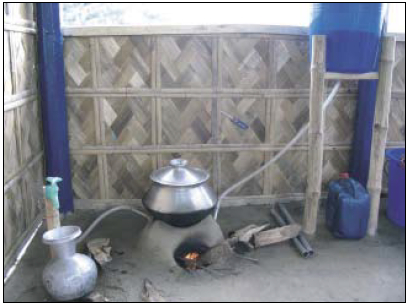Difference between revisions of "Chulli pasteurization"
From Akvopedia
| Line 1: | Line 1: | ||
| + | [[Image:chulli_icon.png|right]] | ||
[[Image:chulli pasteurization.jpg|thumb|right|300px|Chulli pasteurization. <br>Photo: Johnston, UNICEF.]] | [[Image:chulli pasteurization.jpg|thumb|right|300px|Chulli pasteurization. <br>Photo: Johnston, UNICEF.]] | ||
Revision as of 05:11, 14 June 2012
Pasteurization is the process of disinfecting water by heat or radiation. Typical water pasteurization achieves the same effect as boiling, but at a lower temperature (usually 65-75°C), over a longer period of time.
The chulli stove system combines two water treatment processes: filtration and pasteurization. Water flows first through a rapid sand filter and then into aluminium tubing coiled inside a traditional clay stove (chulli). From the stove, the water flows through heat resistant plastic tubing to an outlet tap, where it is collected in a container.
The water is pasteurized during daily cooking. By regulating the flow, the water temperature can be maintained at 70°C; sufficient for pasteurization as it flows through the coil.

